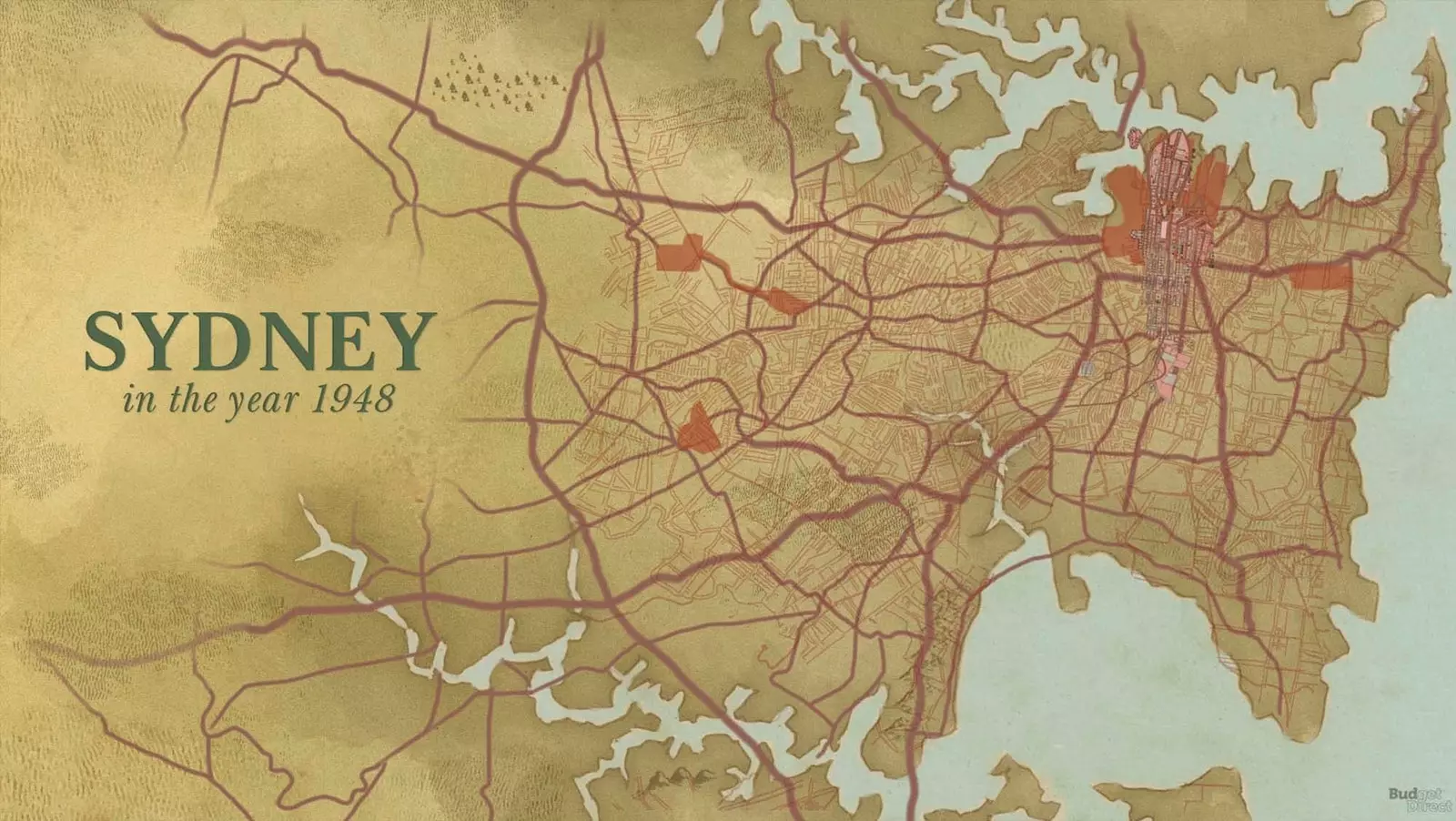
250 years in 30 seconds
How do cities get to be what they are? What do its oldest walls, its ports and roads tell us? How do they go from being a settlement to a big city? All these questions are answered, in just 30 seconds, on the animated map that shows the changes that the city of sydney since its foundation, 250 years ago, until now.
The video, from the Australian insurance company Budget Direct, summarizes the analysis of dozens of historical atlases of the area . "In her relatively short journey, Sydney has experienced famines, attempted rebellions, a gold rush, trade booms, the Great Depression , two world wars and hosted the Summer Olympics", they say from the company.
When Captain James Cook and HMS Endeavor set out for the east coast of the Australian mainland in 1768, little was known about the land that would become New South Wales. Until then, European knowledge of the existence of those lands was practically nil, but, once Cook's expedition was carried out, the British government decided that Botany Bay could serve to house a penal colony , thus establishing the curious beginning of the country that we have all heard of.
Later, in 1788, while the prison colony was still being built, the main settlement was changed to PortJackson . In 1799, the Governor's House, the oldest building in Australia today, was built with the sweat of prisoners, who lived in a military regime of forced labor.
In 1822, a city began to be erected that would transcend the old prison, with civil institutions, gardens and streets - that was when they were given the name that they still maintain today to many- And in the middle of the century everything took a turn when gold was discovered near Bathurst, which led to a huge increase in the population of the area. The first gas lamps were also installed and the University.
At the end of the century, the system of tram lines , the largest in the entire British Empire after London, as well as some tracks and train stations. In the interwar period, despite economic difficulties, they opened roads and ports and the city began to be projected radially around Greater Sydney.

Today, Sydney has become a vibrant city with a high quality of life
As early as the 1990s, large urban plans were carried out to accommodate the ever-increasing population, which had gone from 1.7 million in 1950 to 3.4 in 1985 . During those years, the railway system continued to develop, and the well-known Sydney Opera House (1973), an icon of the Olympic Games held in the year 2000.
In recent years, the city has seen its network of highways , how its great buildings grew, how spaces underutilized by the passage of time were given new use, such as the old industrial area of Barangaroo. All this has given rise to a friendly city, considered the third best in the world to live in.
